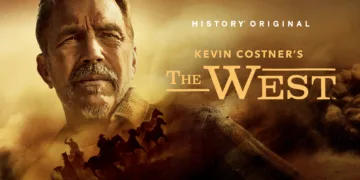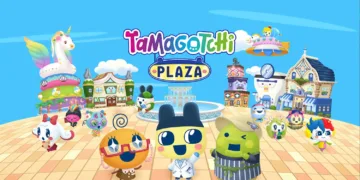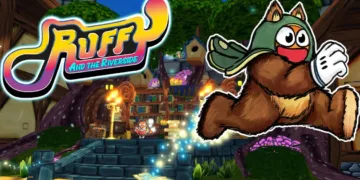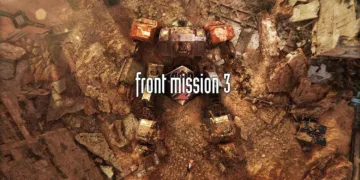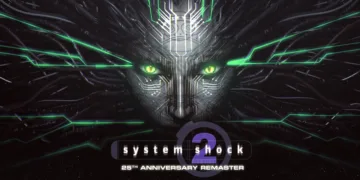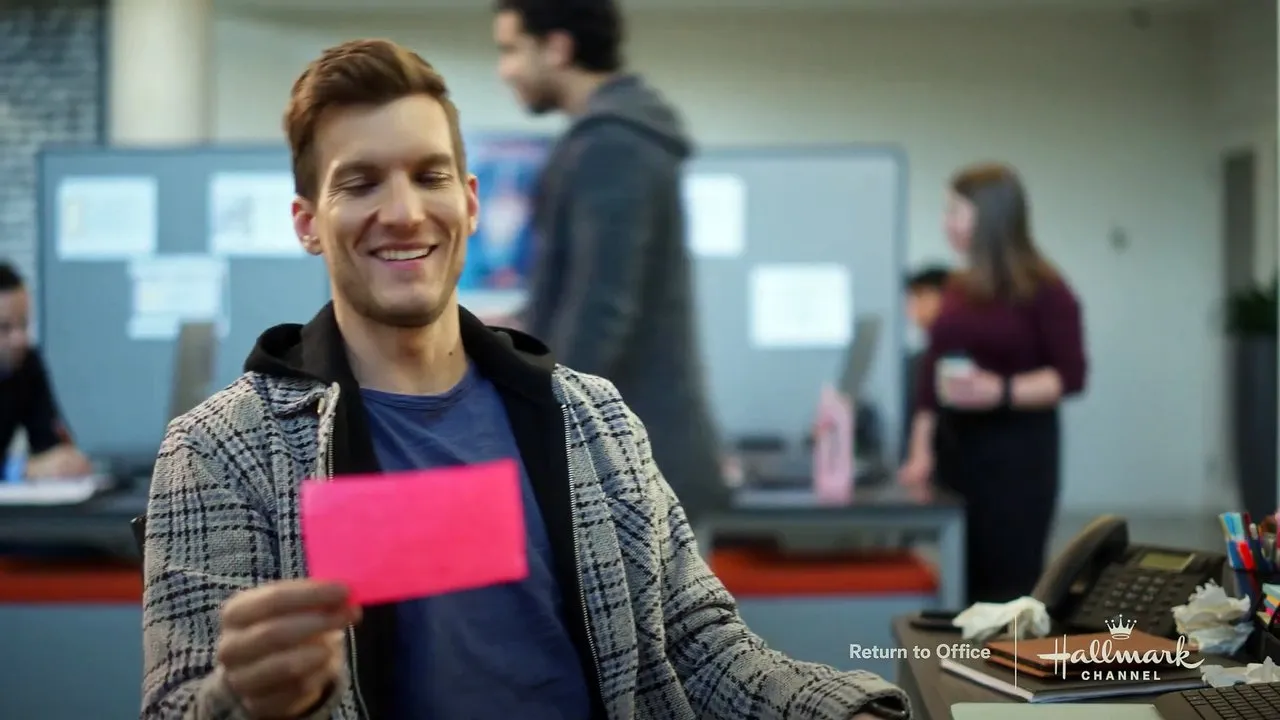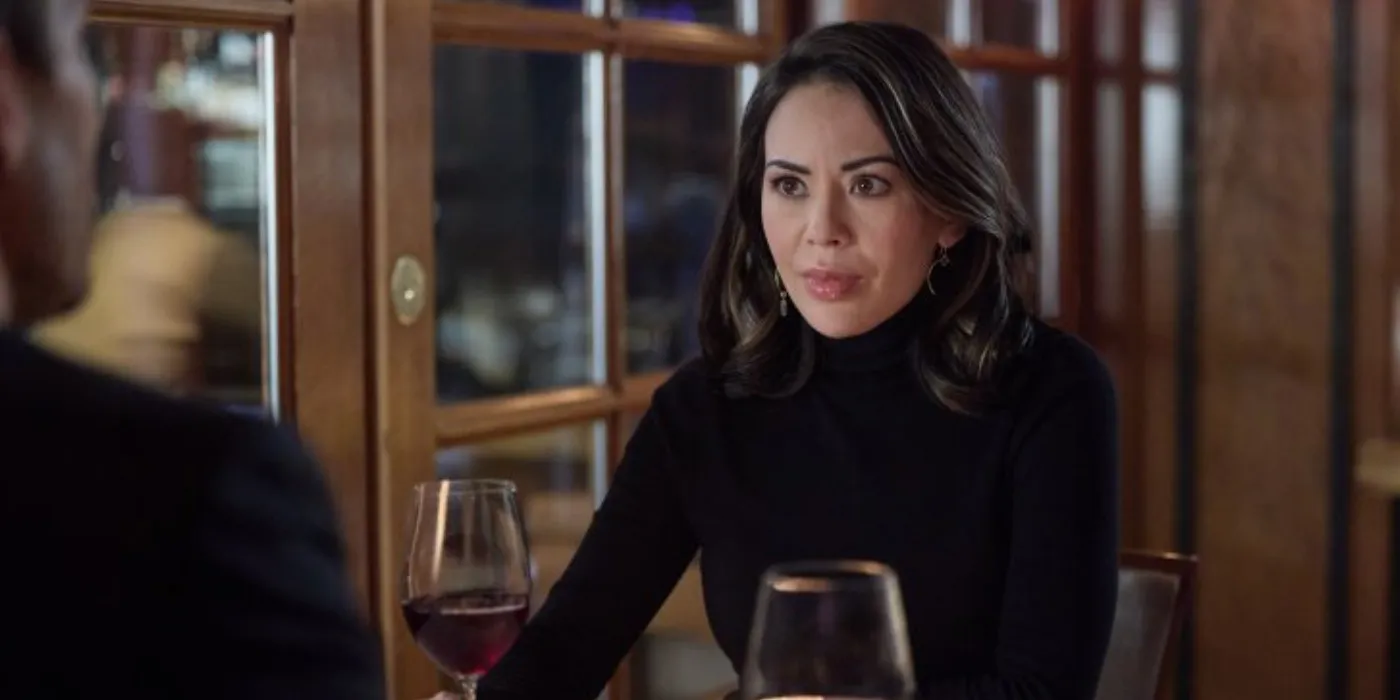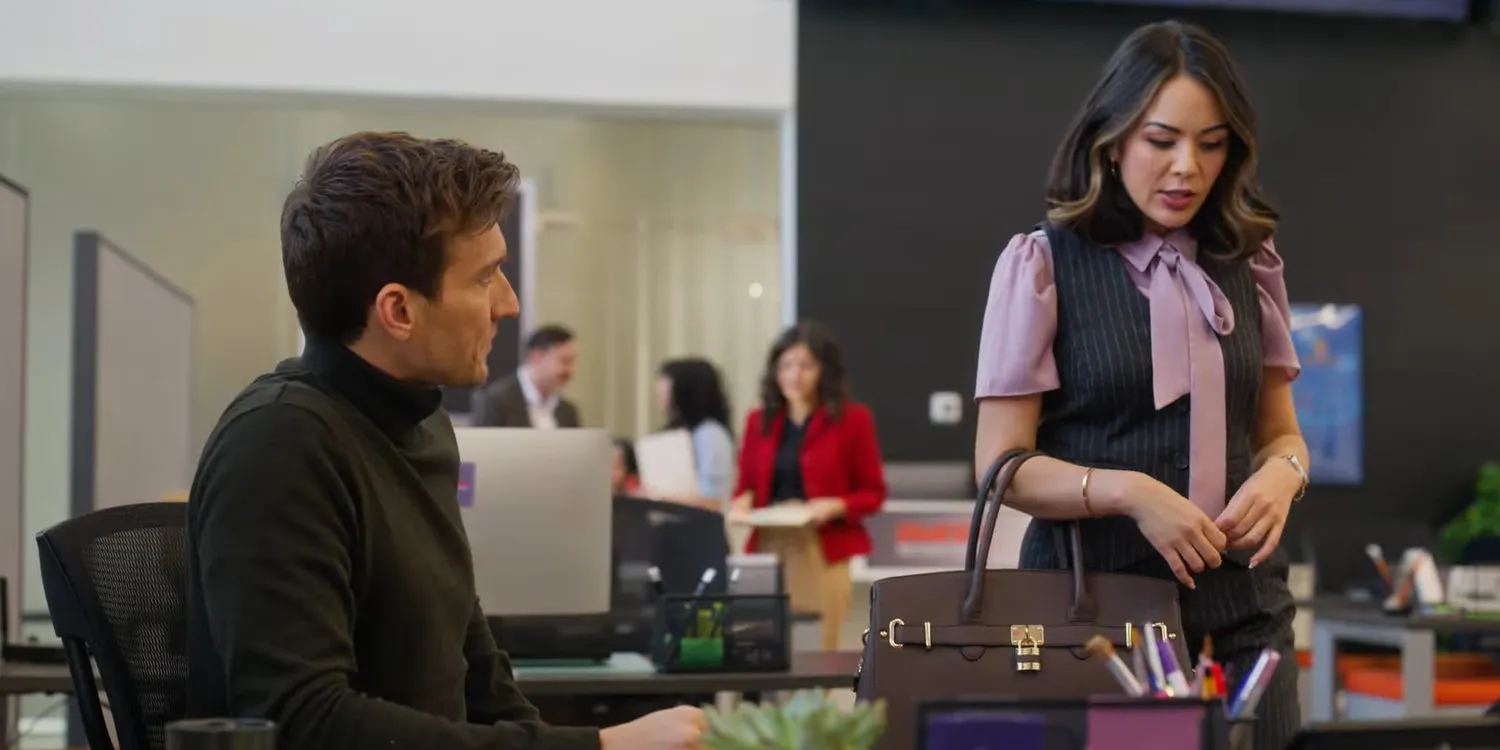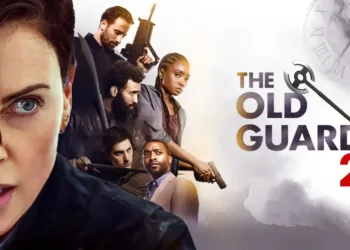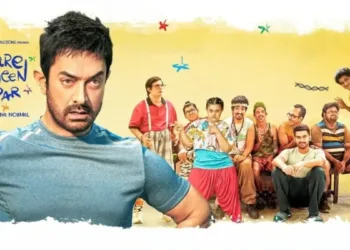In “Return to Office,” the film offers a fresh perspective on workplace romance that reflects current work dynamics. The story unfolds in an environment where employees on a hybrid schedule share a single desk.
Two colleagues communicate exclusively through sticky notes—a method that brings intrigue and playfulness to their interactions. The scenario resonates with recent workplace transformations.
The setting involves a tech company acquiring an art-focused social media firm, creating an interesting contrast between structured corporate life and creative expression. We encounter Liv, a strategic professional with focused determination, and Tom, an art director who infuses imagination into routine work. Their choice to use nicknames—”Ms. Monday” and “Mr. Tuesday”—adds whimsy to their developing connection while maintaining an element of mystery.
The film’s narrative approach reminds me of cinema that challenges conventional storytelling, echoing the experimental spirit of directors like Godard.
Plot and Narrative Development
Liv’s meticulously planned morning routine begins with a friendly interaction with a smart device, a stylish wardrobe change, and the comfort of her home.
This intimate snapshot reveals someone accustomed to control, suddenly disrupted by an unexpected change. A new work schedule compels her to share a desk—a twist that disrupts her structured life and introduces a humorous challenge.
The story explores an unconventional communication method. Liv and Tom start exchanguing sticky notes that evolve into text messages. Their decision to use nicknames—”Ms. Monday” and “Mr. Tuesday”—enables them to share personal quirks while maintaining professional boundaries. This creative correspondence creates a playful dynamic with subtle professional restraints.
The narrative gradually reveals glimpses of each character’s true self, introducing complications that generate both tension and humor. A secondary storyline involving a demanding supervisor and corporate acquisition heightens the emotional stakes, pushing Liv and Tom to reevaluate their professional paths.
The storytelling echoes techniques from French New Wave cinema, where perspective shifts and unexpected developments breathe new life into a familiar narrative structure.
Character Development and Chemistry
Liv emerges as a focused corporate strategist who prioritizes precision and order in her daily life. Her commitment to the professional world initially seems absolute, yet subtle signs of personal restlessness begin to appear.
Her internal conflict—struggling between strict professional expectations and a desire for personal freedom—adds depth to her character. Truffaut’s films often explored similar psychological landscapes, revealing characters quietly challenging their prescribed roles.
Tom introduces a different energy with his artistic sensibility and relaxed approach to workplace structure. He initially seems unaware of professional boundaries, but his warmth and creative spirit gradually guide him toward personal accountability. His presence becomes a catalyst for Liv, offering her a window into a life less constrained by corporate expectations.
Their connection, initiated through playful note exchanges, brims with witty interactions and shared confidences. The challenge of maintaining separate identities creates moments of both humor and discomfort. Interactions with a demanding supervisor and interfering family members weave additional complexity into their growing relationship, generating both tension and entertainment.
Workplace Dynamics and Corporate Themes
The office emerges as a central element in the film, reflecting shifts in workplace dynamics. The setting explores how a hybrid schedule transforms everyday work experiences, with desk-sharing creating both challenges and unexpected connections. The physical space, designed with practicality, generates interactions that feel intimate and functional.
A corporate acquisition of an art-based social media company creates tension in workplace relationships. The film contrasts traditional office protocols with more creative approaches. Bureaucratic structures become obstacles that push characters into uncomfortable scenarios, highlighting their struggles with established systems.
Technology plays a critical role in the narrative. An exploration of artificial intelligence questions whether mechanical precision can replace human creativity. Such conflicts influence character decisions, prompting them to reevaluate personal and professional priorities.
The shared workspace becomes a ground where work tasks and personal emotions intersect. Liv and Tom explore a complex interplay between professional responsibilities and personal interactions, challenging their understanding of identity beyond workplace roles. This dynamic environment creates moments where personal aspirations and professional expectations clash.
Cinematic Techniques and Directorial Choices
The film begins with an intimate look at Liv’s morning preparation. The camera explores subtle details—a warm drink in a cherished mug, nuanced expressions as she readies herself—establishing a contemplative mood.
The shared desk becomes a visual space where personal quirks meet structured work life. Framing techniques capture these tensions, balancing moments of intimacy with the detachment of standardized workplace environments.
Classical music weaves through quieter moments of reflection. Soft piano notes blend with office background sounds, creating an auditory landscape that echoes the film’s visual complexity. Sound effects subtly mark transitions between energetic interactions and personal stillness, enriching each scene’s emotional texture.
Scene shifts occur with calculated precision, moving between playful exchanges and intense workplace discussions. The pacing allows unexpected revelations to emerge, keeping viewers attentive to each narrative moment.
Conversations pulse with energy, revealing hidden connections and unspoken attractions. The director’s visual choices—intimate close-ups during note exchanges and wider shots of the sterile office space—heighten character interactions. Carefully selected dialogue leaves lingering impressions. Each creative decision contributes to a style that feels both intentional and spontaneous, drawing viewers into a world where environment and personality intertwine.
Themes, Modern Relevance, and Final Thoughts
The film explores contemporary relationships and the tension between professional aspirations and personal satisfaction. It reveals how individuals might appear constrained by work roles while secretly nurturing deeper emotions and dreams. The playful sticky note exchanges become a pathway for authentic connections, allowing personal truths to surface.
The story investigates workplace dynamics where flexible work arrangements create unexpected opportunities. The narrative contrasts digital efficiency with human creativity’s unique power. A secondary storyline exploring corporate attempts to replace artistic input with algorithmic solutions highlights technology’s complex impact on creative work.
Reimagining the traditional office romance, the film blends humor and emotional depth. Traces of French New Wave cinema emerge through its nuanced portrayal of workplace dynamics. Storytelling techniques inspired by innovative directors illuminate cultural shifts and personal transformation, creating a captivating narrative about love amid professional challenges.
The Review
Return to Office
Return to Office delivers a charming twist on a familiar office romance, skillfully merging modern work dilemmas with personal breakthroughs. The film captures the nuances of corporate life while highlighting unexpected moments of genuine connection. Its inventive narrative structure, along with precise visual and auditory cues, creates an engaging viewing experience that resonates with today’s work culture.
PROS
- Fresh take on office romance
- Inventive narrative structure
CONS
- Some twists may seem foreseeable





























